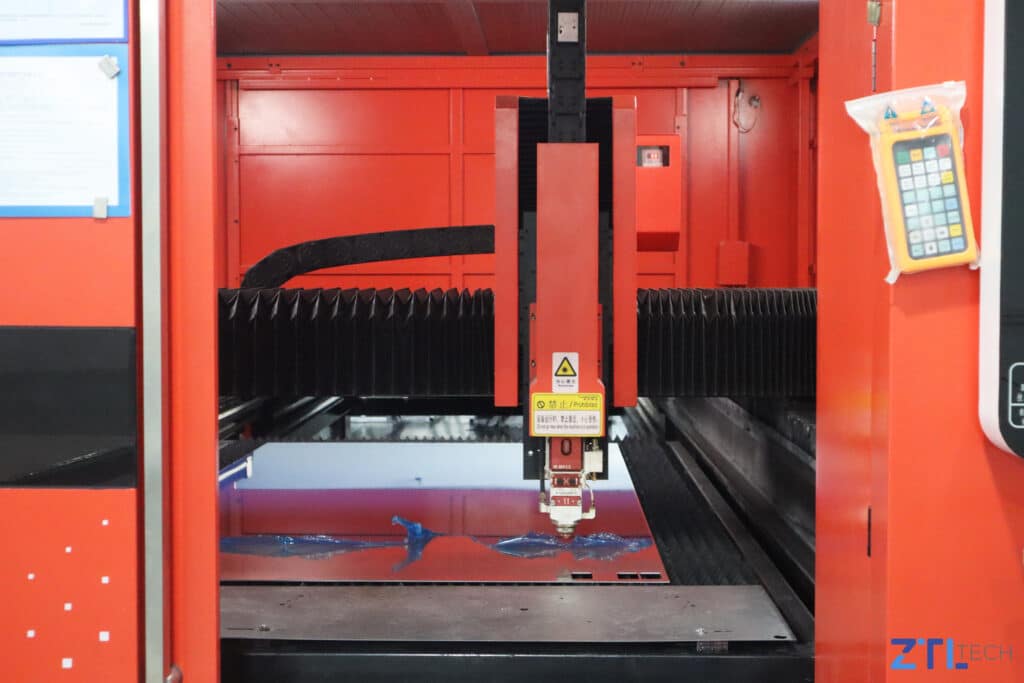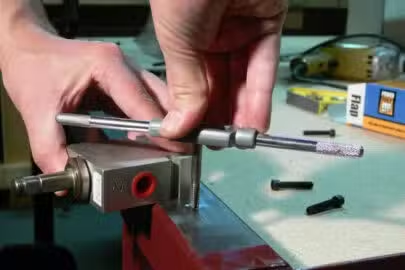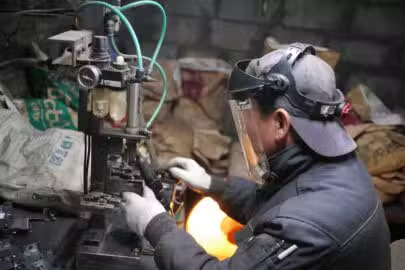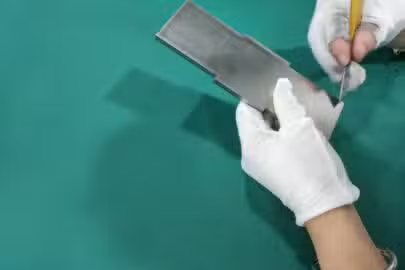Sheet metal products are widely used in various industries and fields, such as automotive manufacturing, construction, electronics manufacturing, aerospace, medical equipment, and more. Sheet metal products feature light weight, high strength, corrosion resistance, smooth surface, and low manufacturing cost, thus they are widely used in manufacturing various products and parts. Sheet metal fabrication is an important process in the shaping sheet metal products. Sheet metal fabrication includes traditional cutting, blanking, bending and forming methods and process parameters, as well as various cold stamping mold structures and process parameters, various equipment working principles and control methods. In this article, we’ll cover the basics of sheet metal fabrication.
What is Sheet Metal Fabrication?
Sheet metal fabrication is a comprehensive cold processing process for metal sheets (usually less than 6mm), including shearing, punching/cutting/compositing, folding, welding, riveting, splicing, forming (such as automobile bodies), etc. Its distinctive feature is that the thickness of the same part is consistent.
Common Sheet Metal Fabrication Techniques
Sheet metal fabrication involves a variety of processes, including laser cutting, punching, bending, welding, grinding, etc.
Laser Cutting
Laser cutting has become an increasingly common sheet metal forming technique. The sheet metal is exposed to a high-power, high-density laser, and the heat of the laser melts or vaporizes the sheet metal in contact with it, forming a cutting process. This is a faster, more precise cutting method that is performed automatically using a computer numerical control (CNC).

Numerical Control Press
Sheet metal fabrication stamping by CNC punch machine is vital to sheet metal fabrication. CNC punching machines is suitable for processing various types of metal sheet parts, and can automatically complete a variety of complex hole shapes and shallow stretch forming processes at one time. Apart from it can automatically process holes of different sizes and hole spacings in different shapes as required, the small punching die punches large round holes, square holes, waist-shaped holes and various shapes of curved contours in a nibbling manner. Moreover, special technique processing such as blinds, shallow stretching, counterbore, flanged holes, reinforcement ribs, embossing, etc. can also be carried out.
Bending
Metal bending is to fold 2D flat parts into 3D parts. Its processing requires a folding bed and corresponding bending fixture. It also has a certain bending sequence. The principle is to fold first without interference to the next cut and then fold later if it will interfere with the next cut. Bending fixture include straight knives and curved knives (80℃, 30℃).

Welding
Sheet metal welding processing is to weld multiple parts together to achieve the purpose of processing, or weld the edges of a single part to increase its strength. The processing methods generally include the following: CO2 gas shielded welding, argon arc welding, spot welding, etc. The selection of welding methods for sheet metal fabrication is based on actual requirements and materials.
Polishing
Polishing finish is a commonly used process in sheet metal fabrication. Its quality affects the appearance of the entire sheet metal fabrication part.
How to Process Sheet Metal?
The process flow is usually divided into the following steps in accordance with the structure of the sheet metal parts.
- Drawing design: Generally, customers provide drawings and samples, and our company’s engineering staff will measure, design, and unfold them to fix out processing decomposition diagrams and assembly diagrams and submit them to the production department for processing.
- Material preparation: Select the appropriate sheet metal material.
- Pre-processing treatment: Treat the material surface, such as degreasing, cleaning, polishing, etc., to facilitate subsequent processing.
- Laser processing: According to the design requirements, use a large laser cutting machine to cut the material into the required size and shape. Using laser cutting to cut materials, the workpiece will have neat, smooth and beautiful cross-sections and accurate dimensions after processing, and it has the advantage over workpieces with arcs.
- CNC punch processing: Use CNC punch to cut, pierce, groove, and emboss the sheet metal materials according to the design drawings.
- Bending: Bending the flat parts processed by the punch press according to the design requirements to form the required three-dimensional shape.
- Welding: Weld the bent parts if necessary.
- Surface treatment: Surface treatment of finished products, such as painting, electroplating, polishing, etc.
- Assembly: Assemble the various components to finally form the finished product.
Material Selection For Sheet Metal Fabrication
Sheet metal materials are materials suitable for the bending and forming process, which involves material properties including material hardness, tensile strength, shear strength, and so on. The metal materials generally used in sheet metal fabrication are cold rolled sheet (SPCC), galvanized steel (SECC), hot-dipped galvanized steel (SGCC), stainless steel, phosphor bronze sheet, SPTE tinplate, brass (nickel-copper alloy), aluminum alloys, carbon tool steel. The material selected depends on the use and cost of products.
Ordinary Cold Rolled Plate SPCC
SPCC refers to the continuous rolling of steel ingots into steel plate coils or sheets of required thickness through a cold rolling mill. There is no protection on the surface of SPCC. It is easily oxidized when exposed to the air, especially in humid environments, the oxidation rate accelerates and dark red rust appears. The surface must be painted, electroplated or otherwise protected during use.
This material can be divided into the following categories according to its use:
General quality: SPCC, suitable for products with lower processing levels, such as cutting and bending.
Punching quality: SPCD, ideal for drawing components that require cutting and high degree of molding.
Deep drawing quality: SPCE, the tensile performance is stronger than SPCD, the surface requires electroplating, and is rarely used.
Galvanized Steel Plate SECC
The base material of SECC is ordinary cold-rolled steel coils. Electro-galvanized steel sheets are products of ordinary cold-rolled steel sheets that have undergone degreasing, pickling, electroplating and various post-processing in a continuous electro-galvanizing production line. SECC, like SPCC, is divided into SECC, SECD, and SECE according to the tensile grade.
SECD is an acronym for Steel Electrogalvanized Commercial Cold rolled. It is a low-cost steel metal grade with improved thermal conduction that is mostly utilized for the casings of computer and other electronic accessories. SECD steel is electro-galvanized commercial quality cold rolled steel which is basically cold rolled and then coated with zinc in an electro-galvanizing line. The coating of zinc protects the base steel from rust and corrosion. SECD material is usually coated with zinc or zinc-aluminum alloy as a means of corrosion protection.
SECE is an acronym for Steel Electrogalvanized Commercial. It is a low-cost steel metal grade that is mostly utilized for the casings of computer and other electronic accessories. SECE material is usually coated with zinc or zinc-aluminum alloy as a means of corrosion protection.
Hot-dip Galvanized Steel Plate SGCC
Hot-dip galvanized steel coil refers to a semi-finished product that is hot-rolled, pickled or cold-rolled. After cleaning, annealing, and immersing in a molten zinc bath at a temperature of about 460°C, the steel sheets are coated with a zinc layer, and then quenched and tempered. Smoothed and chemically treated. SGCC material is harder than SECC material, has poorer ductility (avoid deep drawing design), thicker zinc layer, and poorer weldability.
Stainless Steel
There are many types of stainless steel, which are divided into SUS301, SUS302, SUS304, SUS410, SUS430, SUS434, SUS444 and so on according to the carbon content and metal elements. Stainless steel has high hardness, high strength, anti-corrosion, welding performance, antibacterial properties and other properties. Choose the most suitable stainless steel material according to the functional requirements of the product. Here are two stainless steel materials commonly used in sheet metal fabrication.
Stainless Steel SUS301
The content of Cr (chromium) is lower than that of SUS304, and its corrosion resistance is poor. However, it can obtain high tensile strength and hardness through heat treatment, and has good elastic properties. It is widely used as spring contact parts.
SUS301 can be divided into SUS301 1/4H, 1/2H, 3/4H, H, and EH according to the heat treatment grade. Among them, the hardness of SUS301-EH can reach up to 520HV or more. It should be noted that SUS301 material has metallic crystalline directionality. The higher the heat treatment level, the harder but brittle it is. If you are not careful during molding, it can easily cause bending corners and side wall cracks.
Stainless Steel SUS304
One of the most widely used stainless steels. The carbon content is lower than SUS301, so the strength and hardness are lower than 301. However, due to the addition of Ni (nickel), it is more corrosion-resistant and heat-resistant than steel containing Cr (chromium). It has Very good mechanical properties, no heat treatment hardening, no elasticity. Materials with higher strength and hardness can be obtained through heat treatment, which are widely used in covers and brackets required by EMI.
Phosphor Bronze Flakes PBS
Phosphor bronze is composed of bronze (copper-zinc alloy) added with deoxidizer (P) and other trace elements such as Fe. It has strong ductility and fatigue resistance. Phosphor bronze is mainly used for electrical switches, terminals, EMI and other shrapnel and conductive materials. The material strength is worse than stainless steel, and the surface generally requires electroplating.
Brass (Nickel-copper Alloy)
Brass is a copper-zinc alloy that is strong, corrosion-resistant, and has excellent electrical conductivity. And brass has high strength and excellent cold and hot workability, and is widely used.
Aluminum Alloy
Aluminum alloy is a common material for sheet metal fabrication. Depending on the alloying elements, its main characteristics vary.
Carbon Tool Steel
Carbon tool steel is a high-carbon steel that basically contains no alloying elements, with a carbon content in the range of 0.65%-1.35%. Carbon tool steel is easy to forge and form, has good processing performance, and can obtain high hardness and high wear resistance after heat treatment.
SPTE Tinplate
Tin-plated steel plate, commonly known as tinplate (SPTE), refers to a cold-rolled steel plate plated with a thin layer of metallic tin on the surface. It has a certain strength and hardness, good formability and is easy to weld. The surface of the tin layer is bright, which mainly prevents corrosion and rust.
Surface Treatment of Sheet Metal Fabrication
Surface treatment of sheet metal can provide anti-corrosion protection and decoration. Before surface treatment of sheet metal, oil, rust, welding slag, etc. should be removed from the surface of the sheet metal. Common surface treatments for sheet metal include: powder coating, electro-galvanizing, hot-dip galvanizing, surface oxidation, surface drawing, silk screen, etc.
- Aluminum: powder coating, oxidation, oil coating, silk screen
- Cold rolled plate SPCC: powder coating, painting, silk screen
- Hot rolled plate SHCC: electroplating, painting
- Galvanized plate SECC: SECC electrolytic plate is divided into N material and P material. N material is mainly not surface treated, and P material is used for spray parts.
First-class Sheet Metal Fabrication Services
When looking for a company that offers top-notch sheet metal fabrication services, you should prioritize the quality, precision, efficiency, and advanced technology of their fabrication services. Zintilon has made great progress in the sheet metal manufacturing industry over the years. We keep up with the latest technological developments and provide our customers with the most advanced solutions. We manufacture products to tight tolerances to ensure product fit and functionality. By advanced machinery and skilled technicians, we consistently achieve precise results. In terms of efficiency and timeliness in sheet metal fabrication, we are well aware of the importance of delivering projects on time while ensuring high quality. We will optimize processes, utilize automation as much as possible, and maintain effective communication channels to ensure efficient manufacturing project management.




